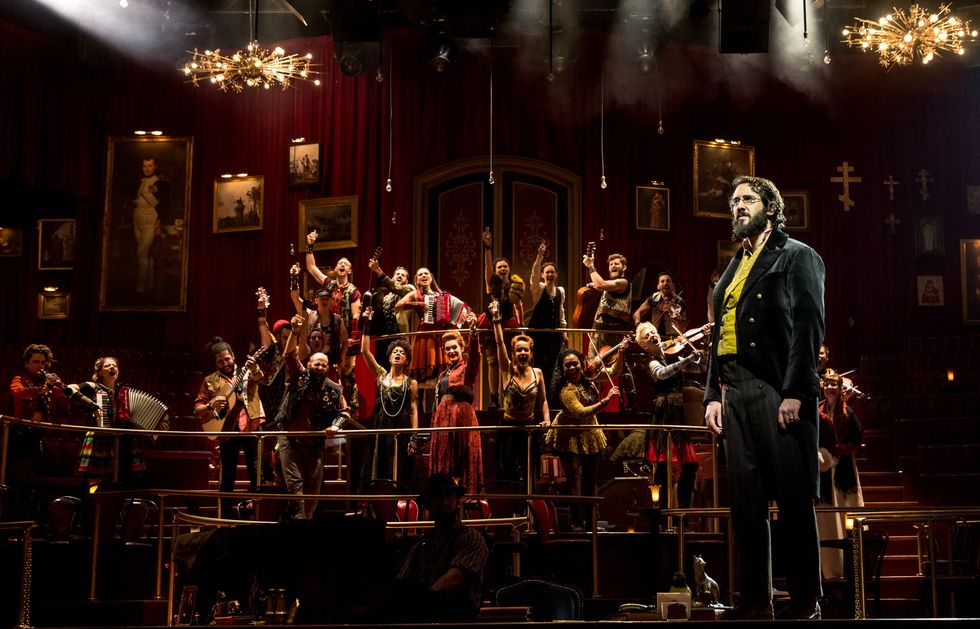Choreography's Constantly Shifting Role on Broadway
I first got hooked on Broadway musicals as a preteen at Gypsy, with its tapping moppets, gyrating burlesque queens and Tulsa, the dancing heartthrob. I’ve been going ever since, but Dance Magazine has been at it even longer.
The 1926-27 Broadway season was just ending when DM began publication, and of its 200-plus shows, dozens were new musicals. One, a Ziegfeld revue called No Foolin’, listed more than 80 performers. Such huge ensembles of dancers and singers were common, whether in revues, operettas or musical comedies.
And why not? The ’20s were roaring, and Broadway was flush. But that wasn’t the only difference between then and now. Dance in the theater was only tangentially related to a show’s content. It was window dressing—however extravagant, it remained mere entertainment.
But just look at who was providing it! Fred and Adele Astaire had become the toast of the town two years earlier in Lady, Be Good! Its “musical staging” was credited to Sammy Lee, whose six shows in DM”s inaugural season included Oh, Kay!, with “Fidgety Feet” and “Clap Yo’ Hands,” and A Night in Paris, the second Broadway outing for a young dancer named Ray Bolger, who would gain lasting renown in The Wizard of Oz. (In 1932, his rubber-legged hoofing was on the opening-night bill of Radio City Music Hall, along with the Roxyettes and Martha Graham.)

Ray Bolger
Courtesy of DM Archives
The Cocoanuts
featured not just the Marx Brothers but famed ballroom dancers the De Marcos. They went to Hollywood, along with stage luminaries like Eleanor Powell, Bill “Bojangles” Robinson and Busby Berkeley, who’d been “arranging” dances.
But “choreography” was making inroads. In 1926 Berkeley was credited as choreographer on The Wild Rose, an operetta set in Monte Carlo; George Balanchine weighed in in 1936 with On Your Toes. “Slaughter on Tenth Avenue” made dance a channel for detailed storytelling, and the choreographic milestones that followed brought us to this season’s Bandstand, in which Andy Blankenbuehler evokes the psychological burdens of its World War II veterans with heartbreaking battle choreography.
Earlier, in 1927, Show Boat had already proven that musicals could tackle serious social issues while providing glorious song and dance—with hardworking Sammy Lee choreographing; Agnes de Mille fused dance with the plot and invented the dream ballet in 1943 for Oklahoma!; Jerome Robbins made standard dance breaks look old-fashioned in 1957, with the nonstop choreography of West Side Story.
At that point, stardom could still attach itself to Broadway dancers. Chita Rivera joined Gene Kelly and Gwen Verdon as a household name. Fame and fortune were by no means certain—Katharine Sergava’s star performance as the first Laurey in Oklahoma!”s dream ballet landed her on DM‘s cover, but she disappeared after only two more Broadway shows (though The New York Times gave her an extra 15 minutes in 2003 by erroneously reporting that she had died). But celebrity status was still possible.

Gwen Verdon
Courtesy of DM Archives
However, as times changed, Broadway musicals tried to keep up. Spectacular pop operas like Les Misérables and The Phantom of the Opera were too bulky to move much. And director Harold Prince and composer Stephen Sondheim were pioneering a new kind of show that delved into serious material that didn’t necessarily accommodate the featured dances that had become de rigueur in musical comedy.
Still, the first of their collaborations, Company, in 1970, had “musical staging” by one Michael Bennett, and featured a chorus dancer named Donna McKechnie. You know the rest. Along with other Broadway gypsies, McKechnie took part in the all-night conversations and workshops that in 1975 became A Chorus Line.
It changed how musicals were created, the definition of a hit, the look of Broadway ensembles and the way dance was perceived. “It really exposed what it means to be a dancer, what drives one to become a dancer,” says Nikki Feirt Atkins, founder and producing artistic director of American Dance Machine for the 21st Century, which reconstructs and performs significant work by theater choreographers like Jack Cole, Bob Fosse and Gower Champion.
But in glorifying ensembles, A Chorus Line changed the terms of Broadway stardom. Shows no longer produce marquee dancers, and it’s not just because AIDS robbed the theater of so much artistry. Apart from McKechnie and Tommy Tune, whose breakout role was in Bennett’s Seesaw, dancers have not become above-the-title performers.
Savion Glover is an exception, because musicals like Bring in ‘Da Noise, Bring in ‘Da Funk were built around his talent. Atkins points out that Robert Fairchild’s stunning work in Christopher Wheeldon’s An American in Paris did not bring him the super stardom he might have achieved in another era.

Josh Groban and the cast of Natasha, Pierre & The Great Comet of 1812
Chad Batka, courtesy of Matt Ross PR
Lately the focus has been on ensembles, and choreographers like Wheeldon, pushing and pulling at the musical’s boundaries. Susan Stroman’s Contact and Twyla Tharp’s Movin’ Out made dance the main narrative vehicle; for this season’s Natasha, Pierre & The Great Comet of 1812, Sam Pinkleton’s split-level choreography surrounds the audience and sends the ensemble on a taxing, exhilarating marathon of movement that would shock—and probably thrill—Ziegfeld. Here come the next 90 years!




